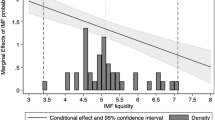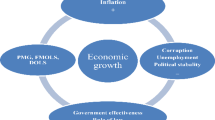Abstract
These remarks summarize the economic forecast and budget outlook that the Congressional Budget Office (CBO) published in February 2014. The discussion has not been updated to reflect subsequent economic and budget data or subsequent projections by CBO. Under an assumption that current laws governing federal taxes and spending remain in place, CBO projects that real GDP will expand by roughly 3 percent between the fourth quarter of 2013 and the fourth quarter of 2014—the largest rise in nearly a decade. Similar annual growth rates are projected through 2017. Nevertheless, CBO estimates that the economy will continue to have considerable slack for the next few years. To a large degree, the slow recovery of the labor market since the official end of the recession in 2009 reflects slow growth in the demand for goods and services. To a smaller degree, that slow recovery is the result of structural factors that stem from the recession and the subsequent weak growth of output but that are not directly related to the economy’s current cyclical weakness. The unemployment rate is expected to remain above 6.0 percent until late 2016. Moreover, labor force participation is projected to move only slowly back toward what it would be without the cyclical weakness in the economy. Beyond 2017, CBO expects that economic growth will be well below the average seen over the past several decades, primarily because of slower growth in the labor force arising from the aging of the population. Inflation, as measured by the change in the price index for personal consumption expenditures, is expected to remain at or below 2.0 percent throughout the next decade. Interest rates on Treasury securities are projected to increase in the next few years as the economy strengthens. The federal budget deficit has fallen sharply during the past few years, and it is on a path to decline further this year and next year. However, if current laws remain unchanged, the deficit will increase again after a few years because revenues are expected to grow at roughly the same pace as GDP whereas spending is expected to grow more rapidly. Federal debt held by the public is expected to equal 74 percent of GDP at the end of this year and close to 80 percent a decade from now.













Similar content being viewed by others
References
Congressional Budget Office, 2014a. The Budget and Economic Outlook: 2014 to 2024. February. www.cbo.gov/publication/45010.
Congressional Budget Office, 2014b. The Slow Recovery of the Labor Market. February. www.cbo.gov/publication/45011.
Additional information
This paper is based on a presentation made at the NABE Policy Conference on February 24, 2014. Figures are drawn from CBO’s The Budget and Economic Outlook: 2014 to 2024 (February 2014) and The Slow Recovery of the Labor Market (February 2014) and have not been updated to reflect subsequent economic and budget data or subsequent projections by CBO. Years referred to in describing the economic outlook are calendar years, and years referred to in describing the budget outlook are federal fiscal years (which run from October 1 to September 30).
*Douglas Elmendorf is the eighth Director of the Congressional Budget Office (CBO). His term began on January 22, 2009. He oversees the agency’s work in providing objective, insightful, timely, and clearly presented information about budget and economic issues. Before he came to the CBO, Elmendorf was a senior fellow in the Economic Studies program at the Brookings Institution. As the Edward M. Bernstein Scholar, he served as coeditor of the Brookings Papers on Economic Activity and the director of the Hamilton Project, an initiative to promote broadly shared economic growth. He was previously an assistant professor at Harvard University, a principal analyst at the Congressional Budget Office, a senior economist at the White House’s Council of Economic Advisers, a deputy assistant secretary for economic policy at the Treasury Department, and an assistant director of the Division of Research and Statistics at the Federal Reserve Board. In those positions, he worked on budget policy, Social Security, Medicare, national health care reform, financial markets, macroeconomic analysis and forecasting, and other topics. He earned his Ph.D. and A.M. in economics from Harvard University, where he was a National Science Foundation graduate fellow, and his A.B. summa cum laude from Princeton University.
Rights and permissions
About this article
Cite this article
Elmendorf, D. CBO’s Outlook for the Economy in February 2014. Bus Econ 49, 142–148 (2014). https://doi.org/10.1057/be.2014.18
Published:
Issue Date:
DOI: https://doi.org/10.1057/be.2014.18




